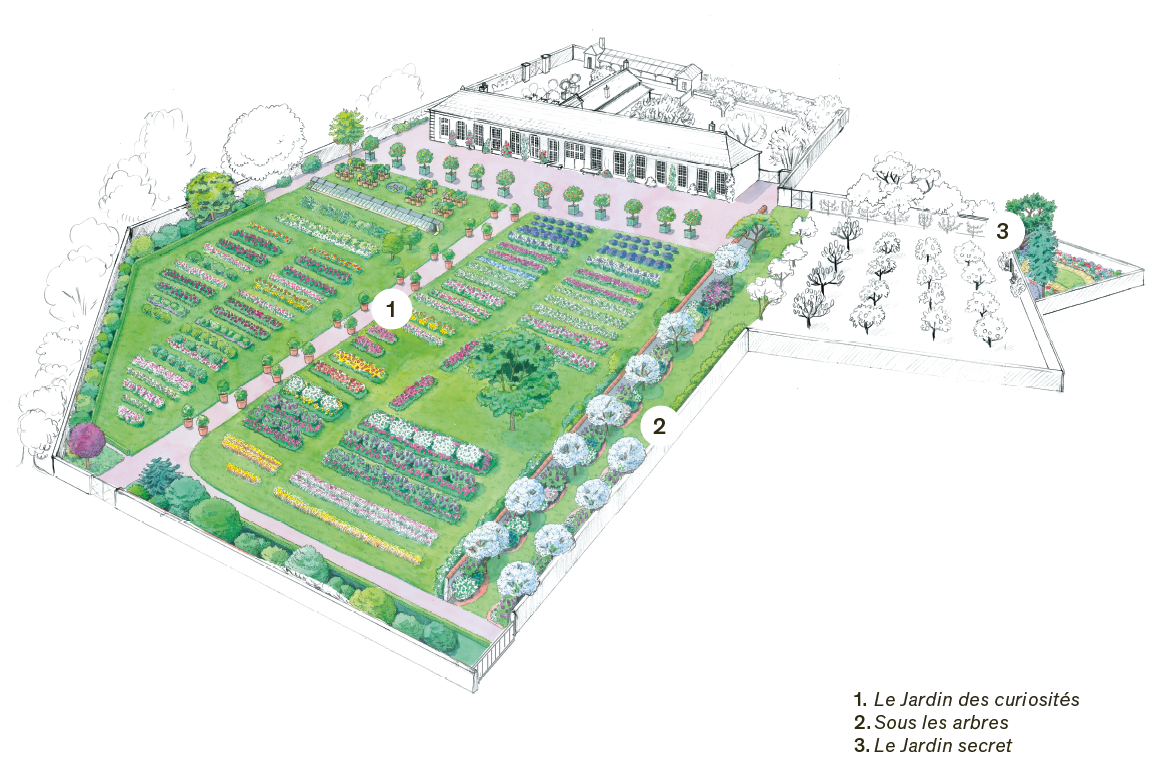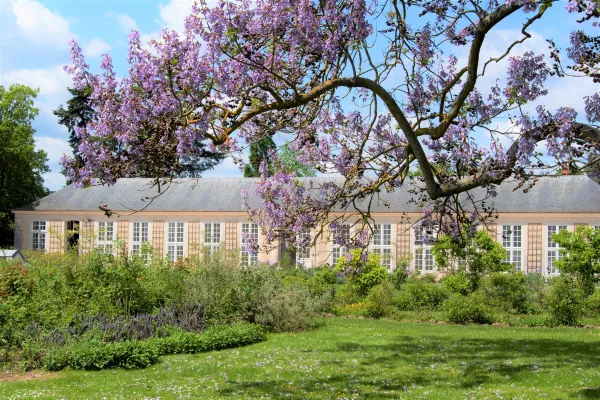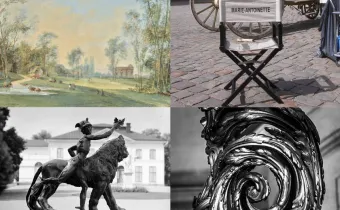Versailles: a history steeped in perfume
In the 17th century, just as Louis XIV had commissioned work on the Trianon de Porcelaine — replaced by the Trianon de Marbre in 1687 — flowers were in fashion, and the Trianon gardens were flooded with heady, fragrant floral plants: jasmine, tuberose, and hyacinth. Awash with spell-binding scent, the gardens were set up with a nursery system that ensured they bloomed all year round.
Alongside this, fragrance was taking off at the court of Versailles, with the palace becoming the cradle of perfume-making craft and artistry from the late 17th century on. The master perfumers here strove to provide sovereigns and courtiers alike with ever more sophisticated products, from fragrances and sachets to scented gloves and fans.
In the 18th century, cosmetics thrived in step with the rise of the personal hygiene movement. Perfumery as an art and trade was in vogue, drawing in specialists in ever greater numbers, including Claude-François Prévost, perfumer to Queen Marie-Antoinette.
The Perfumer’s Garden
The fruit of an exceptional collaboration between the Trianon gardeners and Francis Kurkdjian, the Perfumer’s Garden brings together hundreds of floral essences. Certain species, such as verbena, roses, and jasmine, are historical, having grown in the gardens of Versailles for centuries; some others offer surprising bouquets reminiscent of chocolate (such as the chocolate cosmos) or apple (like Pelargonium odoratissimum, or apple geranium), while other species, such as the stinking iris, give off unpleasant odours.
To create the Perfumer’s Garden, gardeners worked with teams from Maison Francis Kurkdjian to select nearly 300 plants used in perfumery. Classified in nine categories according to the raw material used, these plants are the building blocks that the perfumer uses to craft fragrances. Patchouli delivers its scent through its leaves, carrot through its seeds, bergamot through its zest, cedar through its wood, rose through its petals, iris through its rhizomes, benzoin though its resin, and vanilla through the fruit of its orchid. Finally, several plants such as hyacinth, peony and violet are “silent” flowers, meaning that they release no extract that can be used in a fragrance, despite emitting a pronounced scent in nature. Perfumers must therefore recreate their aroma artificially.
On June 3 and 4, the Perfumer's Garden will be accessible, exceptionally, for free visits during the Rendez-vous aux jardins. Throughout the summer, the public will be able to discover it during guided tours and themed workshops.
Information and reservations: chateauversailles.fr
a garden, three parcels
Located around the Châteauneuf Orangery, the Perfumer’s Garden is made up of three gardens, each with its own distinct identity and atmosphere.
1. The “Garden of Curiosities,” located across from the Orangery, features the majority of the plants, organised in several parterres in the shade of the great Paulownia, the imperial tree that bursts into flower every spring. Thanks to a buried greenhouse maintained at a constant temperature, fragrant herbs and other select plants can be grown all year round. The pathways criss-crossing the garden are interspersed with potted orange and lemon trees, whose branches will fill with fruit in the summer.
2. “Under the Trees” is a pathway bordered by Japanese cherry trees, made up of several patches of land covered in fragrant plants and shrubs, such as rustic jasmine, lilac, and syringa (mock orange) with its unique and delicate bouquet.
3. Finally, visitors must cross the orchard planted with several dozen fruit trees to find the more intimate area of the “Secret Garden”. Through a gate in the encircling stone walls, visitors discover a partially shaded garden shielded from the commotion of the outside world and laid with natural Japanese stepping stones. Wandering through this garden is like fording a river, amid perennials and unique plants that blossom at different times of the year. Orchids, rose bushes, and giant Himalayan lilies intermingle, naturalise, and adapt to their environment under the shade of a monumental cherry laurel. A bench invites visitors to sit and admire the charming panorama of this contemplative garden.

maison Francis Kurkdjian and the palace of versailles
From the age of twenty-four, Francis Kurkdjian’s life path has been intricately bound with the Palace of Versailles. A graduate of Versailles’ perfumery school, years later he went on to create a replica of Marie-Antoinette’s fragrance Sillage de la Reine, drawing on archive documents for inspiration.
From the moment he first met Marc Chaya in 2003, he spoke of his vision: returning to the whimsy of the Sun King’s lavish parties, for which the pools and fountains in Versailles’ gardens were scented. In 2006, the pair put their heads together to ensure Francis Kurkdjian was able to design and make the “Soleil de Minuit” olfactory installation for 2006’s Versailles Off festival. A scent of orange blossoms spread in the air from the Orangery parterre while the water of its pool was colored with a flaming sunset tangerine.
For the Grandes Eaux Nocturnes in 2007 and 2008, Francis Kurkdjian brought to life an olfactory experience in the heart of the Palace of Versailles’ gardens. Sixteen bubble machines surrounded visitors in thousands of bubbles scented with strawberry, pear and melon — Louis XIV’s favourite fruits. Francis Kurkdjian also created the “Chutt... d’Eau” and “Le Roi Danse” olfactory installations, set up in the Grove of the Three Fountains and the Ballroom Grove, respectively.
In 2009, Francis Kurkdjian and Marc Chaya launched Maison Francis Kurkdjian, which is now part of the LVMH group. Together, they map out sensual, generous, multi-faceted olfactory experiences where freedom of expression reigns supreme, working hand in hand in a new embodiment of the French art of living and craftsmanship.
In 2022, Maison Francis Kurkdjian became the proud patron of the Perfumer’s Garden project, thereby continuing its commitment to supporting the Palace of Versailles.





